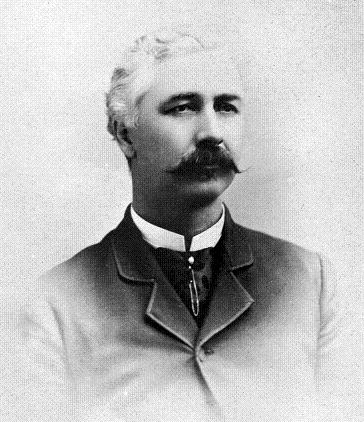
Robert Wright Boyd
(post-war image)
ROBERT WRIGHT BOYD IN THE CIVIL WAR
R. Adam Boyd
Robert Wright (whose actual name was Robert Wright Boyd) was born in Hamptonburgh, Orange County, New York around September 1841. He was the son of Robert W. Boyd and Margaret Wright. He attended school until at least the age of eighteen and worked as a farmer until the start of the Civil War. On September 6, 1862, at the age of twenty, Robert enlisted for a three-year term of service in the Union army. He enlisted as a Corporal under the name “Robert Wright.” Family tradition says that he ran away from home to enlist in the army against the wishes of his father, which may give some indication of why he did not enlist as “Robert Boyd.” The 1890 Veterans Schedule of the U. S. census lists Mary Boyd of 40 Perry Street as the widow of Robert Boyd who served with the 150th New York. Service records for the 150th New York record no Robert Boyd, but they do record a Robert Wright from Hamptonburgh. This demonstrates that the Robert Boyd listed on the 1890 Veterans Schedule and the Robert Wright listed in the service records of the 150th New York are almost certainly one and the same.
Robert mustered into Company I of the 150th New York on October 10, 1862. His regimental descriptive book listed his height at five feet ten and a half inches. It also listed that he had a dark complexion, dark eyes, and brown hair. On October 11, 1862, his regiment left New York and performed garrison and guard duty in Baltimore until July 1863, when it was assigned to the 2nd Brigade, 1st Division, 12th Corps. Under this assignment, the regiment marched to its first major battle: the battle of Gettysburg, where it suffered forty-five casualties.
Sources record that the 150th New York was unable to keep up with other regiments in the brigade because they had never before marched to battle and were not well conditioned. It is reported that many soldiers from the inexperienced regiment threw their packs onto the ground as they rushed to join the battle—something they would certainly regret doing as the battle raged on for two days after their arrival. Perhaps Robert was one of those who threw their packs on the ground; his muster rolls list him as absent from July through October 1863 due to sickness. He spent those months in Finlay General Hospital in Washington, DC and Central Park General Hospital in New York City. It is not known when exactly he became sick, but he was with his regiment until at least the end of June. While recovering from his illness, he received a furlough to travel home to Hamptonburgh from October 30, 1863, until November 7, 1863, after which he returned to service with the 150th New York. Robert remained with the 150th New York through the end of the war, receiving a promotion to the rank of Sergeant on May 30, 1865. (The 1890 Veterans Schedule records that he held the rank of Color Sergeant.) On June 8, 1865, Robert mustered out of the army.
After completing his military service, Robert moved to New York City, where he worked as a carman, which was a horse-and-carriage taxi driver. On September 16, 1874, he married Mary Ann Ballantine in Manhattan. They had three children: William B., Robert Wright, and Virginia T. Robert continued working as a carman until 1879, when he began working as a tobacco importer, locating his office at 168 Water Street. His work required him to take frequent trips to Havana, Cuba. Passenger lists for the Port of New York show Robert arriving from Cuba at least six times between 1879 and 1884. His travel to Cuba was the indirect cause of his death as he contracted yellow fever during an eighteen-day trip beginning just before Christmas in December 1883. On January 13, 1884, just six days after returning from Cuba, Robert died at his home on 40 Perry Street. He was only forty-two years old. Sadly, his wife was just three-months pregnant with their third child when he died.
Robert’s death made the New York Times in an article entitled “Yellow Fever in the City,” which was published on January 15, 1884, and incorrectly lists his name as “Robert M. Boyd.” On the day the article was published, Robert was buried in an unmarked grave in Evergreen Cemetery in Elizabeth, Union County, New Jersey. His wife, Mary, lived eighteen more years after her husband’s death and raised her children with the help of her sister Caroline Dodge. Mary died of chronic nephritis on May 9, 1902, and was buried next to her husband in Evergreen Cemetery three days later.

Robert Wright Boyd
(post-war image)
150th Regiment, New York Infantry